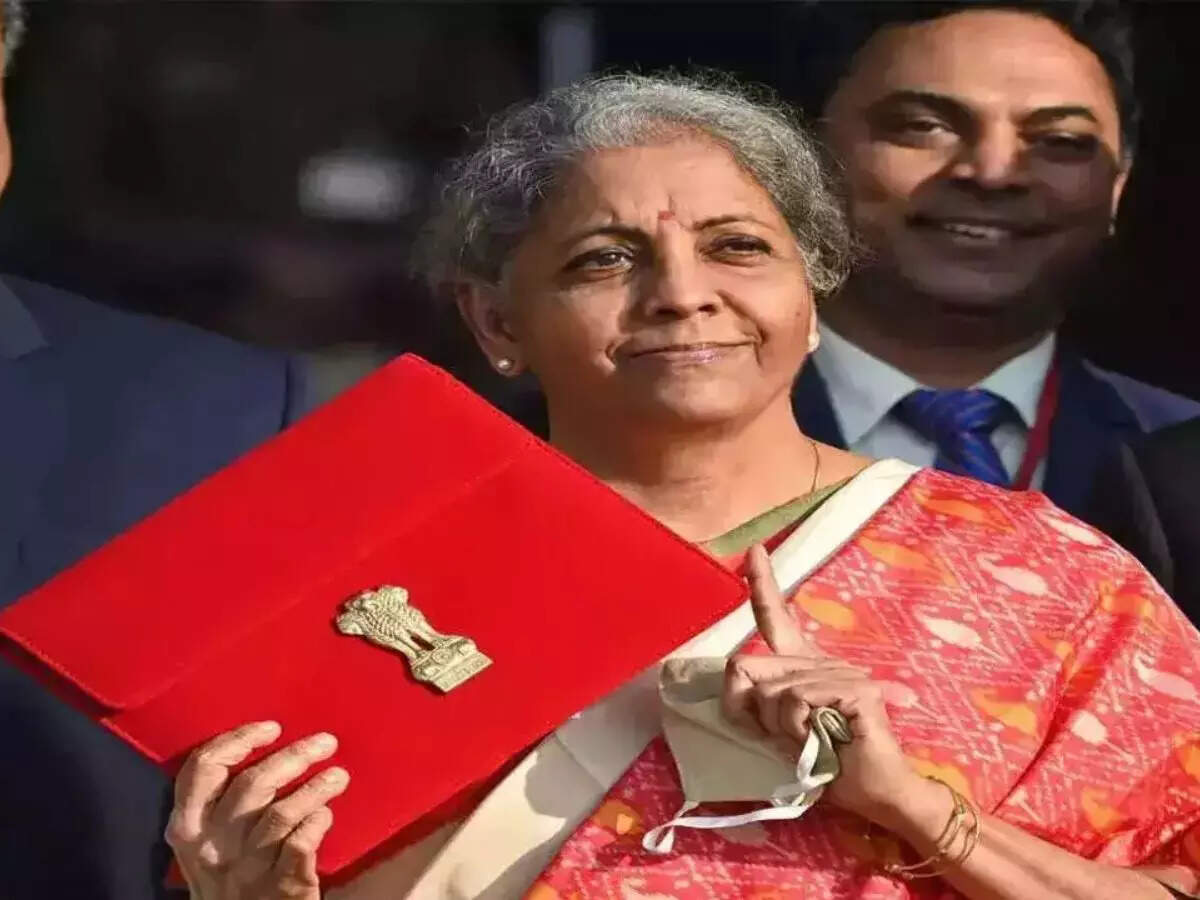- Policy
- 7 min read
Interim Budget 2024-25: The BIG Picture
Finance expert Robin Banerjee evaluates the Union Budget 2024, emphasizing long-term planning, infrastructure focus, fiscal responsibility, and sector-specific strategies. While praising positive moves, he points out areas that need more attention for a comprehensive economic uplift.
Why care for Budget speeches and their contents when the world across almost no-one cares? And more so when it is an ‘interim’ budget, meaning there will be a ‘final’ budget going forward. While these doubts are correct, the current interim budget is somewhat more special.
Let me highlight a few important guiding trends arising from this Union Budget.

Planning long term: This is an election year, which is around the corner. Who knows who will win? Doubts prevail in such scenarios. However, future uncertainties are not reflected in this document. The budget document focuses on creating an environment for the future devoid of significant new freebies.
Infrastructure is the foundation: No country has become a world beater without proper roads and rails. India has started focussing on it. Record-level capital expenditures have been planned. Spending almost Rs 9.50 lakhs in 2023-24, the government plans to spend another Rs 11 lakhs crore next year. What does this mean?
* Capex provides the economy's largest multiplier effect - 2 to 3 times. Just imagine that spending of Rs 11 lakh crore capex could lead to a whopping increase of almost Rs 33 lakh crore to our national income, nearly two-thirds of the total annual budget number;
* Infrastructure-related capex reduces the cost of logistics, speeds up business, and reduces working capital deployment.
Financial environment is the king: The most talked about subject economists debate almost after every budget presentation is - ‘fiscal deficit.’ This interim budget is no different. A fiscal deficit implies how much the government is spending beyond its means. That is the difference between total revenue and total expenditure. How is it bridged? Essentially, by printing money. It could imply a price increase if more money chases the same goods.
Let me tell you, what’s the situation presented in the budget document.
The government is tightening its monetary belt and planning to lower fiscal deficits or money printing. This figure, which is likely to be Rs 17.3 lakh crore in 23-24, is planned to be Rs 16.8 lakh crore next year. This would mean the fiscal deficit being lowered from 5.8 percent to 5.1 percent in 24-25. Even during an election year, this is a sound practice; the government could have easily enhanced the deficit to provide more sops to the population. They desisted from this foolish act.
Bond pricing implication: A reduced fiscal deficit would lead to the government borrowing less to meet its expenses. This, in turn, is likely to reduce risk on government bonds. Leading to a possible reduction of yields in government bonds without possible reduction in the interest-policy rates. Given the possibility of slackening global interest rates, government bond yields could decrease significantly, translating into cheaper economic credit. This could lead to lower interest rates and more momentum for growth. This assumes the other macroeconomic factors remain under control.
Lowering interest costs indirectly is a great strategic move to provide long-term purchasing power in the people’s hands.
Stock market boost: The budget strategy is towards creating an eco-system to enhance the competitive power of the Indian economy, improving basic infrastructure, providing avenues for enhanced employment and reducing interest costs. These should all be music to the stock buyers.
While the global geo-political scenario continues to be challenging, the Indian stock market would remain buoyant, subject to occasional fluctuations.
Enhancing ‘nari shakti’: The better half of ourselves needs betterment to enhance competitiveness. While the budget did not enhance much towards the Ministry of Health and Family, it moved towards a better future for women. The strategic shift included:
* Promotion of vaccination of girls aged 9-14 years for the prevention of cervical cancer (we lose 75,000 women annually due to this deadly disease);
* Rs 21,200 crore allocated towards tackling malnutrition among children, adolescent girls, pregnant women, and lactating mothers;
* The ‘Lakhpati Didi’ scheme empowers women in rural areas to encourage them to start micro-enterprises, and training in skills such as plumbing, tailoring, etc, enabling them to earn at least Rs 1 lakh per annum. The target is to increase from 2 crore to 3 crore women ‘lakhpatis’.
Sectorial success strategy:
(a) Health is wealth: A significant strategy in this budget is to develop the pharmaceutical industry. It is one of the few industries which has a separate allocation for its development, assigning Rs 1300 crore next year, against spending of Rs 265 crore this year. It does not end here. Rs 1100 crore has been allocated for 2024-25 towards Biotechnology R&D. Health is wealth, after all!
(b)Tourism, a money spinner: Focus will shift to significant encouragement to the tourism sector, including religious tourism.
* Bottoms-up push: The Indian states will be encouraged to make comprehensive development and marketing of iconic tourist centers at a global scale. This will lead to - local entrepreneurship, more employment, and Infrastructure improvements.
* Clean India means attracting more tourists. The government will spend in total of Rs 12000 crore next year, over 25 percent increase of this year, on its Swachh Bharat Mission.
(c) Homes to Dream in: A major thought process is to provide housing to as many as are feasible. The plan includes –
* The middle-class community, who are generally trapped in rental chakravyu, will be provided with an additional 2 crores of houses to remove them from unauthorized colonies and slums.
* Solar rooftops to be provided to 1 crore households to get upto 300 units of free electricity every month, outlaying Rs 10,000 crore for 24-25. Sustainable living focussed upon.
What is missing?
No budget can be completely fulfilling. There will always be more demand for more allocation of funds. A few areas which could have been addressed are –
Private consumption slow growth: Private consumption, which is 60 percent of the economy, will grow at 4.4 percent in 2023-24 (last decade, it was around 6 percent). Barring the pandemic year, this is the slowest since 2002-2003. This shows that many of our society are unable to achieve their financial well-being.
Disinvestment needs more attention: This year, Rs 30,000 crore was budgeted to be recovered from disinvestments. But until January 24, only Rs 12,500 crore is done. This is not a good job. Next year’s target is Rs 50,000 crore, which is low considering the opportunity available. The government’s business is not to run businesses but to govern you and me!
Deficient education: Nations can grow well if their subjects are well-educated. We know that employable education in India is inadequate. The bad news is that in 2023-24, the government planned to spend Rs 1.16 lakh crore but ended up spending Rs 8000 crore short. This is not good. It must ensure that the budget for next year of Rs 1.24 lakh crore is not only spent, but well spent.
Income disparity: The income disparity between the rich and poor must be addressed. This can be bridged through a satisfactory old-age pension scheme and health insurance for all. While work is taking place in this area, significantly more should be done. The Budget did not focus on this crucial area.
Last few words
Nothing in this world is perfect. So is the Budget 24-25.
We all need to be happy. And the best number to assess is the per capita income of any nation. Providing free lunches will not lead to the growth of individual income. We all need to find good work to do, provided we have an eco-system to do so.
This provisional budget seems to be working towards this goal to make us happier!

About the Author: Robin Banerjee is the Chairman of Nucleon Pvt Ltd, a global clinical research company. Earlier, he served as the Managing Director of Caprihans India Ltd. Robin has authored 3 bestselling business nonfiction books: (i) Who Cheats and How; (ii) Who Blunders and How; and (iii) Corporate Frauds: Bigger, Broader, Bolder.
Disclaimer: The views expressed are solely of the authors and ETCFO.com does not necessarily subscribe to it. ETCFO.com shall not be responsible for any damage caused to any person/organisation directly or indirectly.



COMMENTS
All Comments
By commenting, you agree to the Prohibited Content Policy
PostBy commenting, you agree to the Prohibited Content Policy
PostFind this Comment Offensive?
Choose your reason below and click on the submit button. This will alert our moderators to take actions